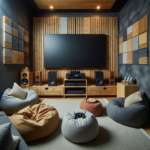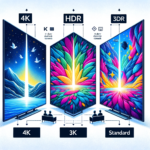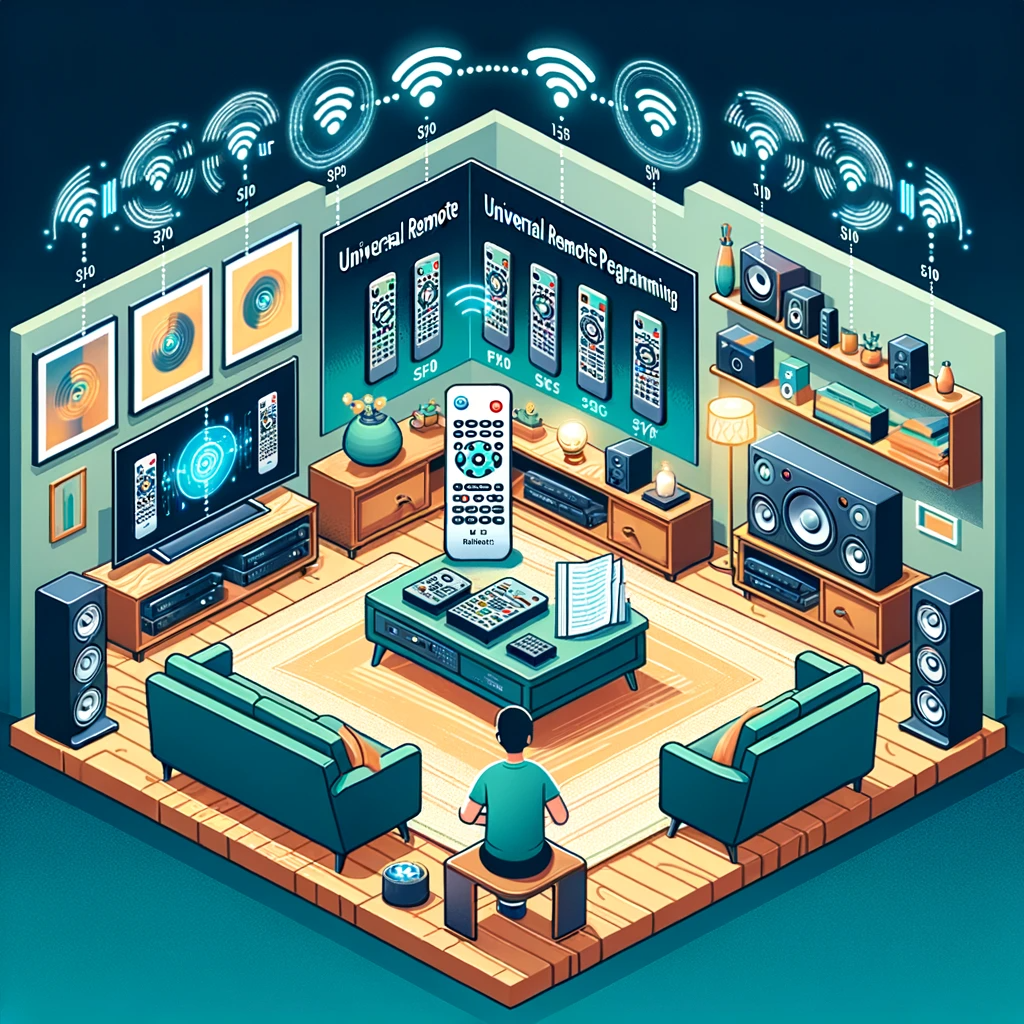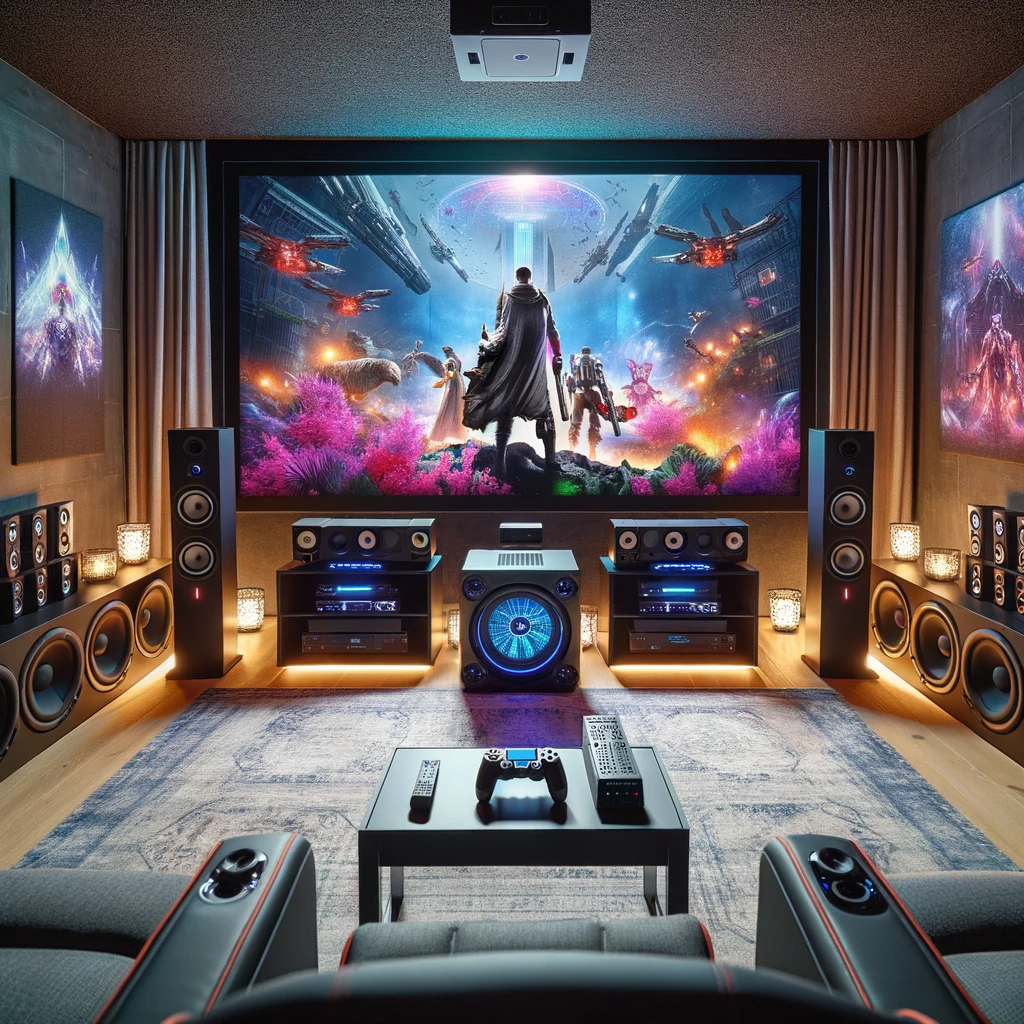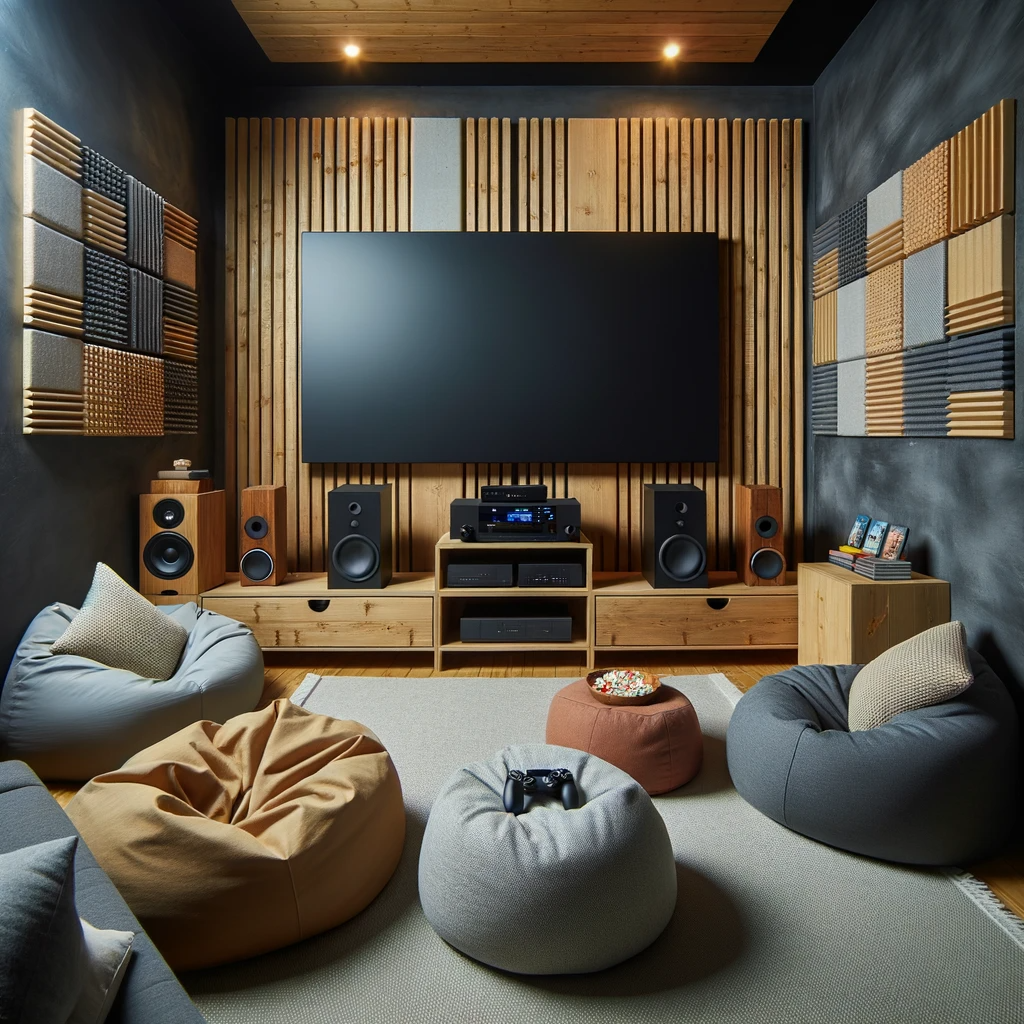Introduction
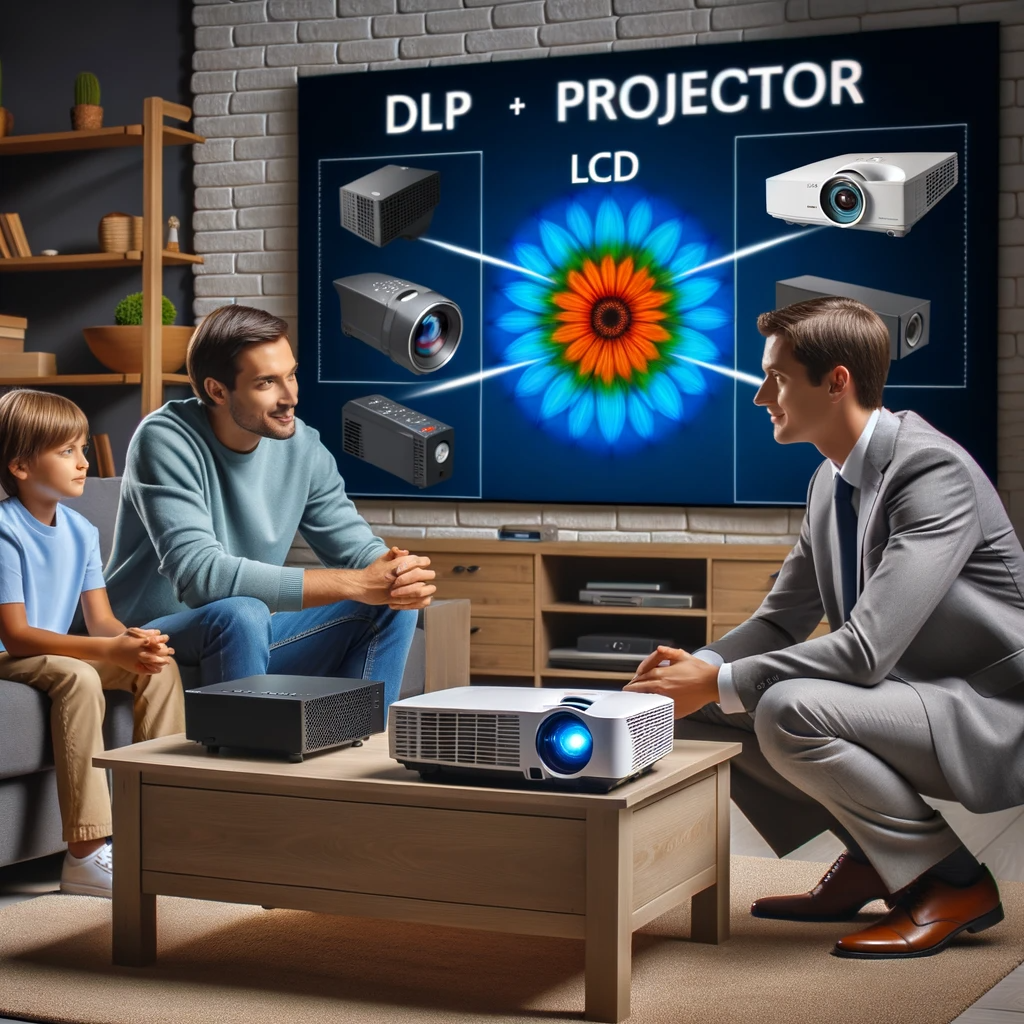
The increasing popularity of home theaters has revolutionized the way people enjoy movies and entertainment. Home theaters offer the convenience of experiencing a cinematic ambiance within the comfort of one’s own home. This trend has gained significant traction in recent years, with more and more households opting for a personalized theater experience.
A New Era of Entertainment
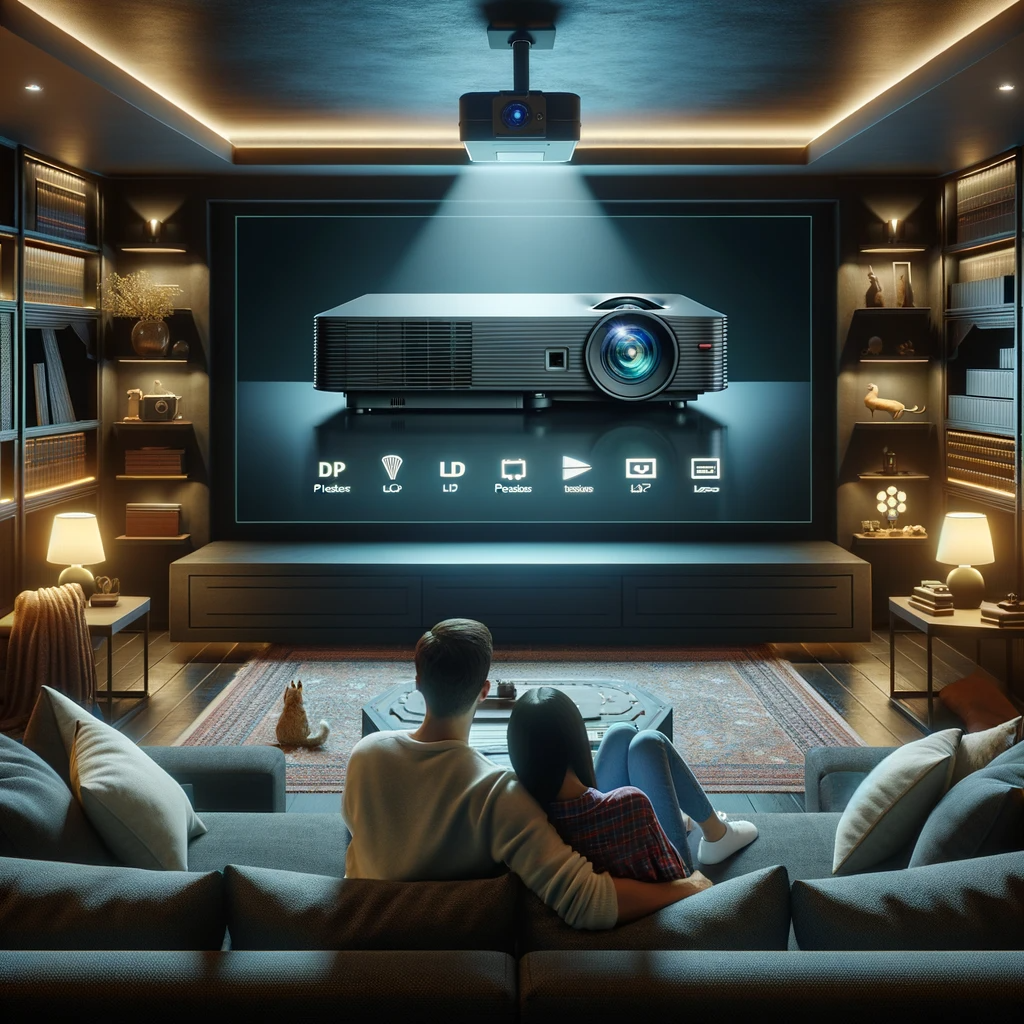
Projectors play a pivotal role in creating an immersive cinematic experience within a home theater setup. These devices have become indispensable due to their ability to project larger images onto screens or surfaces, thereby simulating the grandeur of a movie theater right in your living room.
With advancements in technology, projectors now offer exceptional image quality, vibrant colors, and enhanced visual details. Homeowners are increasingly recognizing the importance of projectors as they strive to recreate an authentic theater atmosphere.
The captivating display projected by these devices enables viewers to feel fully engrossed in what they are watching – whether it’s an action-packed blockbuster or a heartwarming drama. By bringing larger-than-life visuals into our homes, projectors have become a key element in elevating our entertainment experiences to new heights.
Understanding Projectors: A High-Level Overview
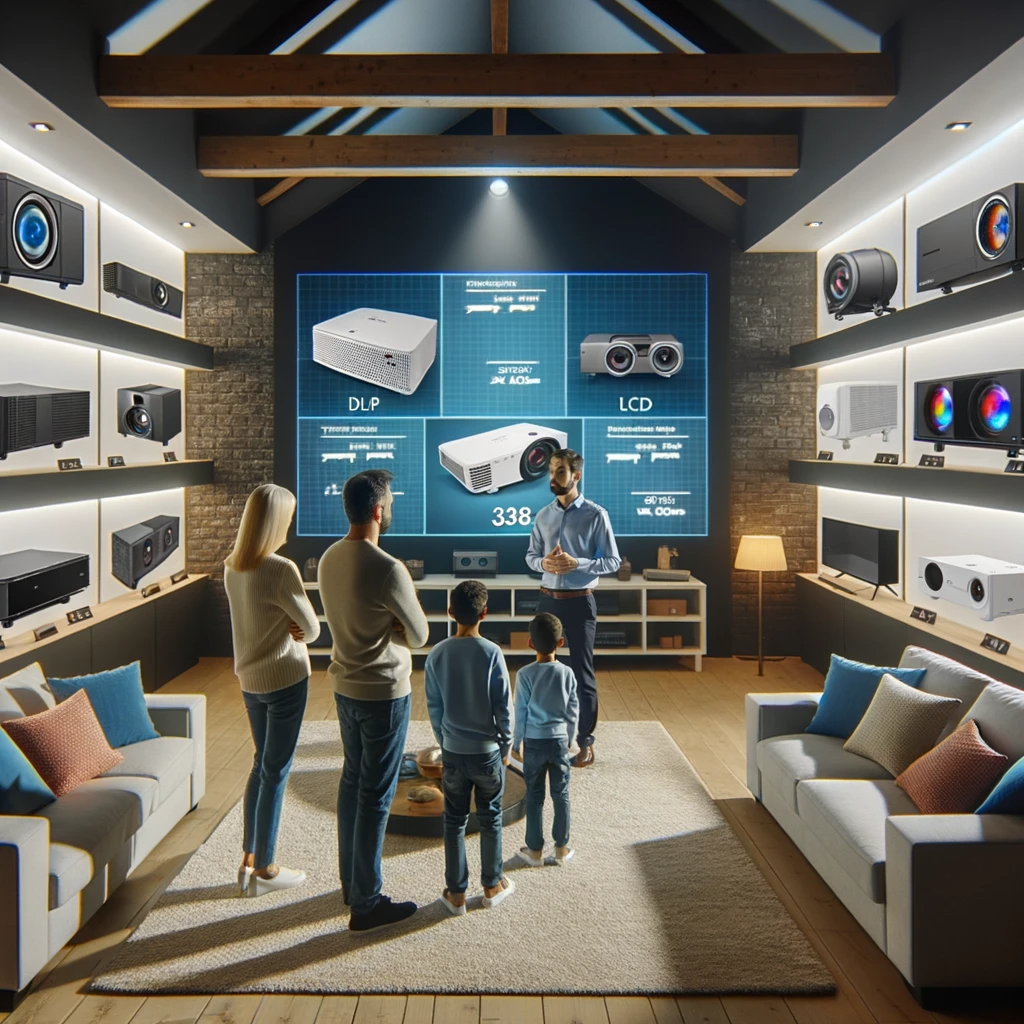
Definition and Purpose of Projectors in Home Theaters
Projectors are devices that display visual content on a large screen or surface. In home theaters, projectors serve as the primary means of projecting movies, TV shows, and other forms of media onto a larger canvas, creating an immersive cinematic experience. Their purpose is to replicate the grandeur of a theater within the comfort of your own home.
Different Types of Projectors (LCD, DLP, LCoS)
There are three main types of projectors commonly used in home theaters: LCD (Liquid Crystal Display), DLP (Digital Light Processing), and LCoS (Liquid Crystal on Silicon). LCD projectors use liquid crystal panels to modulate light and create images.
DLP projectors use tiny mirrors to reflect light and form images. LCoS projectors combine elements from both LCD and DLP technologies to produce high-quality visuals.
Key Components and Their Functions (Lamps, Lenses, Color Wheels)
Projectors consist of several key components that work together to deliver exceptional picture quality. The lamp is responsible for emitting the light that passes through the projector’s optical system. The lenses focus the light onto the projection surface with precision.
Color wheels help reproduce accurate colors by filtering light into red, green, and blue components. These vital components collaborate harmoniously to ensure vivid imagery on the screen or surface being projected onto.
Choosing the Right Projector for Your Home Theater
Considerations for room size and ambient lighting conditions
- Evaluate the dimensions of your room to determine the appropriate projector throw distance and image size.
- Consider the amount of natural light in your viewing space, as excessive brightness can wash out the projected image.
- Opt for projectors with higher brightness levels (measured in lumens) if your room has significant ambient light.
- Choose a projector with adjustable settings to optimize image quality based on various lighting conditions.
Resolution options (HD, 4K, 8K) and their impact on image quality
- Determine your desired level of visual detail: HD (1280×720 pixels), Full HD (1920×1080 pixels), or higher resolutions like 4K (3840×2160 pixels) and 8K (7680×4320 pixels).
- Understand that higher resolution projectors offer sharper images due to increased pixel density.
- Keep in mind that the resolution capability of source content, such as Blu-ray discs or streaming services, should match or surpass the projector’s native resolution to fully utilize its capabilities.
Contrast ratio and its significance in displaying vibrant colors
- Consider contrast ratio, which measures the difference between bright whites and dark blacks.
- Higher contrast ratios result in more vibrant colors and improved overall image quality.
- Look for projectors with dynamic contrast ratios for better performance in scenes with varying brightness levels.
Note that manufacturers may use different methods to measure contrast ratio; compare specifications carefully. These considerations will help you choose a projector suitable for your home theater setup.
Exploring Projection Technologies
LCD (Liquid Crystal Display) Projectors: Brightness, Color Accuracy, and Affordability
LCD projectors work by passing light through three separate LCD panels that control the amount of red, green, and blue light pixels to create an image. One key advantage of LCD projectors is their brightness, allowing for vivid and vibrant visuals even in well-lit rooms.
They excel at color accuracy, providing true-to-life hues that enhance the viewing experience. Additionally, LCD projectors are often more budget-friendly compared to other technologies, making them accessible to a wider range of consumers.
However, one limitation of LCD projectors is their limited contrast ratio. This means that they may struggle to accurately display subtle variations in dark scenes or shadows.
Another potential drawback is the screen door effect – a visible grid-like pattern caused by gaps between the pixels on the LCD panels. While advancements have reduced this effect over time, it can still be noticeable in some cases.
DLP (Digital Light Processing) Projectors: High Contrast Ratio and Smooth Motion Handling
DLP projectors utilize microscopic mirrors mounted on a semiconductor chip to reflect light pixels onto the screen. This technology offers advantages such as high contrast ratio, which allows for deeper black levels and more defined details in both bright and dark scenes. The DLP technology also excels in smooth motion handling without motion blur or judder.
On the other hand, DLP projectors generally have lower brightness compared to LCD counterparts due to limitations in light output efficiency. Though this might not be an issue in dimly lit environments or dedicated home theaters with controlled lighting conditions, it can impact image quality when dealing with ambient light.
LCoS (Liquid Crystal on Silicon) Projectors: Excellent Contrast Ratio and Minimal Screen Door Effect
LCoS projectors combine elements of LCD and DLP technologies. They use liquid crystals on a reflective surface to control light pixels, resulting in high contrast ratios similar to DLP projectors. This allows for exceptional black levels and fine image details even in challenging scenes.
The main advantage of LCoS projectors lies in their ability to minimize the screen door effect, providing a smooth and seamless viewing experience. However, due to the complexity of manufacturing LCoS chips, these projectors tend to be pricier compared to LCD or DLP options.
By understanding the workings and pros/cons of different projection technologies like LCD, DLP, and LCoS, you can make an informed decision when selecting a projector for your home theater setup. Each technology has its strengths and weaknesses, so consider your specific needs and preferences before making a purchase.
Understanding Projector Specifications
Resolution Explained in Detail (720p vs 1080p vs 4K vs 8K)
Resolution is a crucial aspect to consider when choosing a projector for your home theater. It determines the level of detail and clarity you can expect from the projected image. Let’s delve into the different resolution options available:
1. 720p: This resolution, also known as HD (High Definition), offers a resolution of 1280 x 720 pixels. While it provides decent picture quality, it may not deliver the same level of sharpness and detail as higher resolutions.
2. 1080p: Also referred to as Full HD, this resolution stands at 1920 x 1080 pixels, providing more precise and detailed images compared to 720p. Movies, TV shows, and gaming content look vibrant and lifelike on a projector with this resolution.
3. 4K: With four times the number of pixels compared to Full HD (3840 x 2160 pixels), projectors offering a 4K resolution take visual immersion to another level. The increased pixel density results in stunningly sharp images with intricate details that truly enhance your viewing experience.
4. 8K: Although not as commonly available as other resolutions at present, projectors with an impressive capability of displaying an astounding resolution of approximately 7680 x 4320 pixels will soon become more accessible. The incredible level of detail provided by these projectors ensures a truly cinematic experience within your own home.
Beyond Resolution: Other Important Specifications
Resolution is just one aspect among many that contribute to overall image quality in projectors. Here are some other vital specifications you should consider:
1. Brightness: Measured in lumens, brightness determines how well the projected image can withstand ambient light conditions in your viewing room. Higher brightness levels are necessary for rooms with more significant light interference.
2. Contrast Ratio: This specification measures the difference between the brightest and darkest parts of an image. A higher contrast ratio results in more vibrant colors and better differentiation between light and dark areas, enhancing visual depth.
3. Color Accuracy: Look for projectors that offer accurate color reproduction, ensuring that the images displayed on screen are faithful representations of their original content.
4. Connectivity Options: Consider the projector’s available ports and compatibility with your devices, such as HDMI or USB connections, to ensure seamless integration with your home theater setup.
Conclusion
Understanding projector specifications is crucial to selecting the right device for your home theater needs. By considering factors like resolution, brightness, contrast ratio, color accuracy, and connectivity options, you can make an informed decision that aligns with your preferences and viewing environment.
Investing in a high-quality projector allows you to bring the immersive cinematic experience of a movie theater into the comfort of your home. Whether it’s enjoying movies with family or friends or indulging in gaming adventures on a larger screen, a well-chosen projector can elevate your entertainment experience to new heights.
With advancements in technology continually pushing boundaries, projectors are becoming more affordable while offering improved performance. Embrace the possibilities they provide to create memorable moments filled with joy and excitement in your very own home theater setup.


